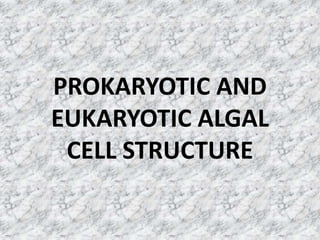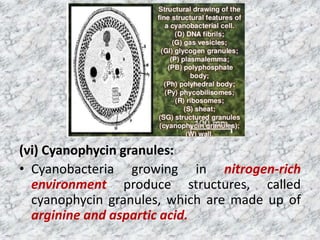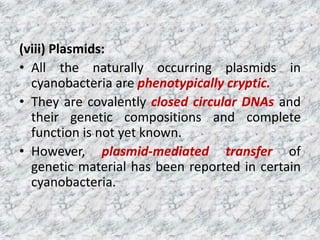The document summarizes the cell structure of prokaryotic and eukaryotic algal cells. Prokaryotic cells like cyanobacteria have an outer cellular covering including a mucilaginous sheath and cell wall, as well as a cytoplasm differentiated into a pigmented chromoplasm and central colorless centroplasm containing DNA. Eukaryotic algal cells have a cell wall, plasma lemma, and protoplast containing organelles like a chloroplast, mitochondria, and flagella. The chloroplast contains thylakoids and pyrenoids and the cell has structures like an eyespot.































